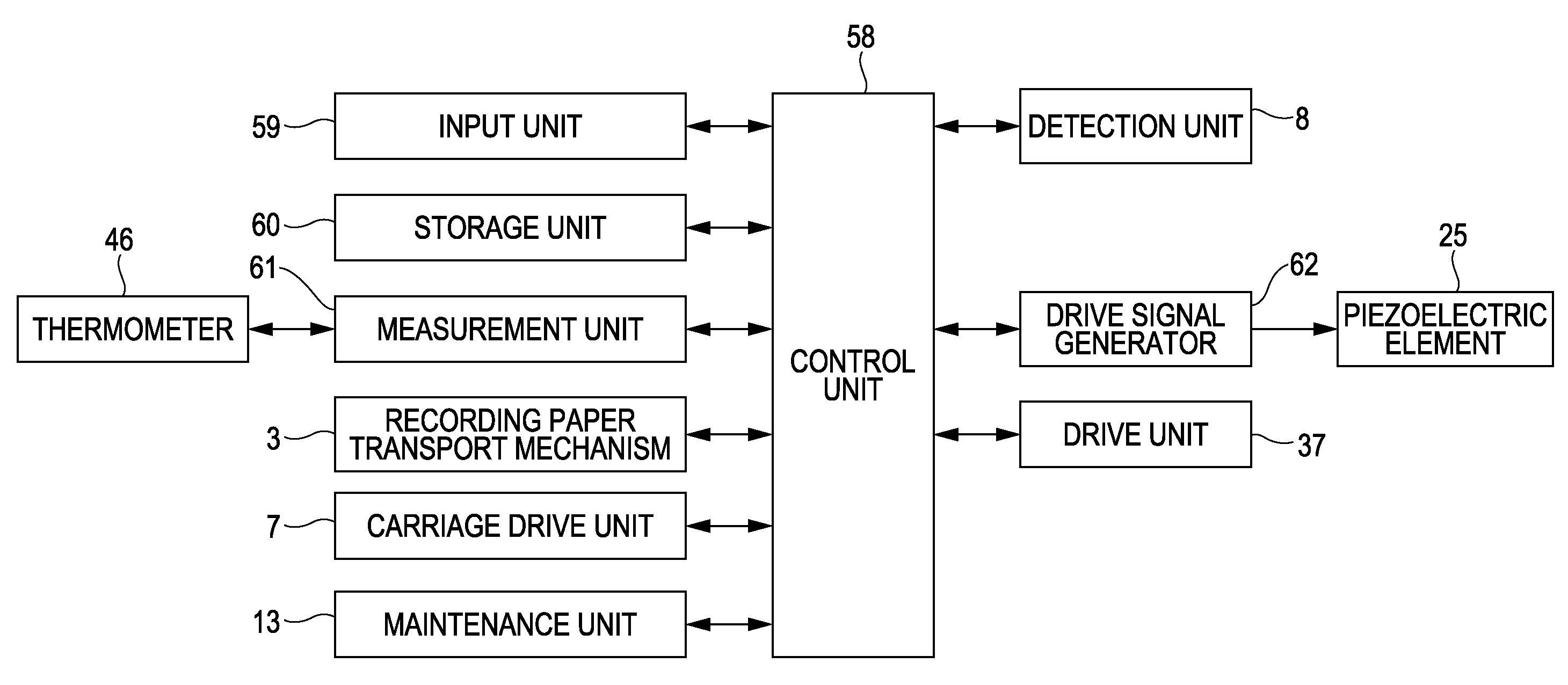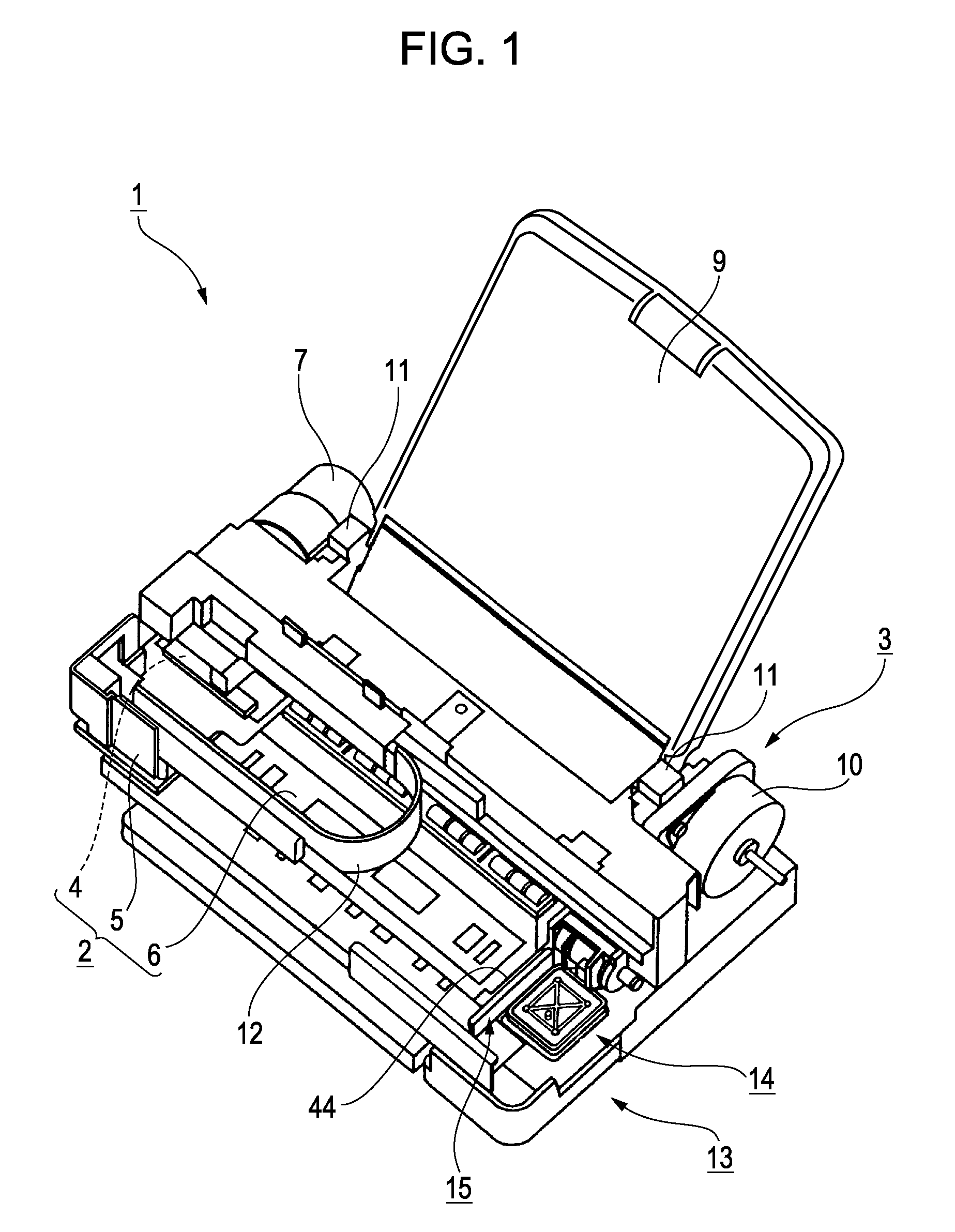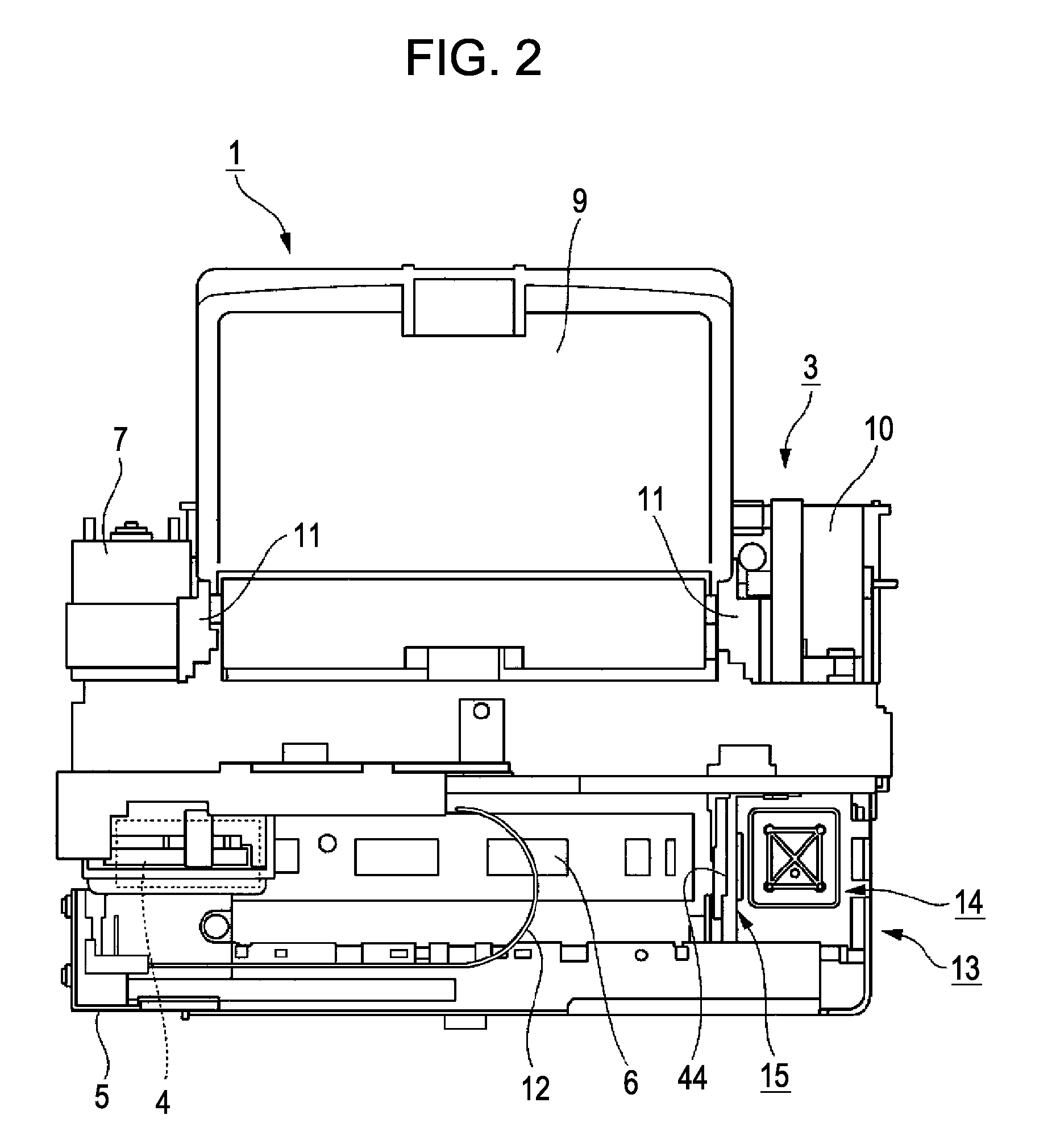Fluid ejecting apparatus and ejecting head maintenance method
a technology of ejecting apparatus and ejecting head, which is applied in the direction of printing, etc., can solve the problems of damage to the forming surface of the discharge port, damage to the discharge port forming surface,
- Summary
- Abstract
- Description
- Claims
- Application Information
AI Technical Summary
Benefits of technology
Problems solved by technology
Method used
Image
Examples
first embodiment
[0066]Next, a cleaning operation (maintenance method) of the ink jet printer 1 having the above-described structure will be described, focusing on the operation of the control unit 58, with reference to the flowchart of FIG. 8.
[0067]When cleaning is started (step S1), the control unit 58 activates the drive unit 37 to bring the upper end face of the cap member 34 into contact with the ejecting surface 17 (step S2). Next, the control unit 58 activates the maintenance unit 13, and suctions the fluid in the space formed between the cap member 34 and the ejecting surface 17 with the suction unit 35 (step S3). In this way, thickened ink in the ejecting ports 16 is discharged.
[0068]Next, the control unit 58 activates the drive unit 37, and takes the upper end face of the cap member 34 out of contact with the ejecting surface 17. Next, the control unit 58 activates the carriage drive unit 7 with the wiping member 44 set at a predetermined position, and wipes the ejecting surface 17 of the ...
second embodiment
[0074]Next, a cleaning operation of the ink jet printer 1 will be described with reference to the flowchart of FIG. 9. Since steps S1 to S8 of this cleaning operation are the same as those of the cleaning operation described above with reference to FIG. 8, the same reference numerals will be used to designate the same steps so that the description thereof will be omitted.
[0075]After performing the processing of steps S1 to S8, the control unit 58 detects the temperature of the thermometer 46 using the measurement unit 61 to measure the temperature of the recording head 4. Next, the control unit 58 stores the measured temperature of the recording head 4 in the storage unit 60. Next, the control unit 58 compares the stored measured temperature to a set temperature that is preset and stored in the storage unit 60 (step S21). When ink having the properties shown in FIG. 7 is used, the set temperature is preferably, for example, about 30° C. The reason is that when the temperature of the...
third embodiment
[0078]Next, a cleaning operation of the ink jet printer 1 will be described with reference to the flowchart of FIG. 10. This cleaning operation differs from the cleaning operation described above with reference to FIG. 9 in that step S31 is performed instead of step S21. Since the other steps are the same as those of the cleaning operation described above with reference to FIG. 9, the same reference numerals will be used to designate the same steps so that the description thereof will be omitted.
[0079]After performing the processing of steps S1 to S8, the control unit 58 calculates the elapsed time from the end of the last cleaning operation and the start of the present cleaning operation, using the measurement unit 61. Next, the control unit 58 stores the elapsed time in the storage unit 60 as a measured time. Next, the control unit 58 compares the stored measured time to a set time that is preset and stored in the storage unit 60 (step S31). The set time is preferably, for example...
PUM
 Login to View More
Login to View More Abstract
Description
Claims
Application Information
 Login to View More
Login to View More - R&D
- Intellectual Property
- Life Sciences
- Materials
- Tech Scout
- Unparalleled Data Quality
- Higher Quality Content
- 60% Fewer Hallucinations
Browse by: Latest US Patents, China's latest patents, Technical Efficacy Thesaurus, Application Domain, Technology Topic, Popular Technical Reports.
© 2025 PatSnap. All rights reserved.Legal|Privacy policy|Modern Slavery Act Transparency Statement|Sitemap|About US| Contact US: help@patsnap.com



